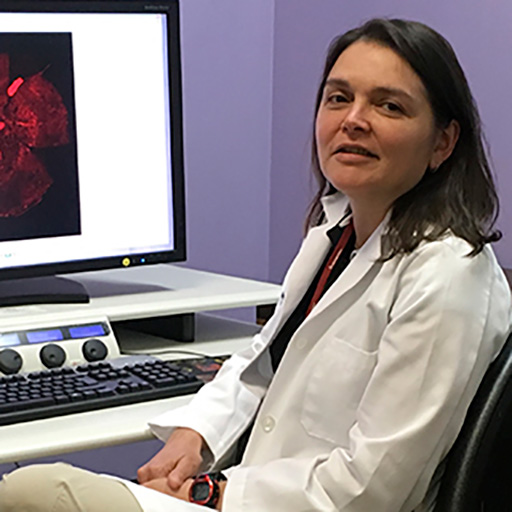Geographic Atrophy: Changes in the Retinal Pigment Epithelial and Inflammatory Cell Populations in the Region of Expanding Lesions

About the Research Project
Program
Award Type
Standard
Award Amount
$160,000
Active Dates
July 01, 2016 - June 30, 2018
Grant ID
M2016079
Acknowledgement
Goals
Age-related macular degeneration (AMD) is a complex disease leading to irreversible blindness, one that disproportionately affects the elderly population in industrialized countries. At the moment, a few effective treatments exist, but new treatments for different symptoms and stages of the disease are urgently needed. This research project will correlate imaging of the atrophic late-stage lesion of AMD donor eyes with findings from detailed morphological and cellular analyses in and around the leading edge of these lesions.
Summary
Age-related macular degeneration (AMD) is a complex disease leading to irreversible blindness in elderly populations of primarily industrialized countries. Geographic atrophy (GA), the cause of both moderate and severe central visual loss in many AMD patients, is as yet untreatable in its late stages. Although the progression of this disease in patients has been well studied, only a few studies analyzed the cellular and molecular features of GA.
This research project will correlate diagnostic imaging performed in patients carrying the atrophic late-stage lesion of AMD, or GA, with detailed morphological and cellular analysis in and around the leading edge of these lesions.
Specific aim 1 of the project will correlate donor eye imaging findings with cellular and molecular proteins present in the retinal cells at the leading edge of the GA lesion. Specific aim 2 of the project will better define the role of the immune system in the pathology of GA lesions.
Retinal imaging of patients is playing an increasingly important role in the diagnosis and treatment of AMD and retinal dystrophies. The proposed research is unique because it will validate clinical imaging findings with morphological and molecular findings of a large number of donor eyes at the edges of GA lesions and surrounding areas. The information gained from this study will aid in understanding the pathophysiological mechanisms causally involved in GA and may offer additional insight into clinical diagnosis and therapeutic decision-making for GA. In addition, the data will be analyzed in conjunction with other known AMD risk factors, such as age, genotype, oxidative stress, and inflammatory components.
Grants
Related Grants
Macular Degeneration Research
Cellular Scale Measures of Short-Term Retinal Atrophy Progression
Active Dates
October 01, 2022 - May 31, 2025

Principal Investigator
Kristen Bowles Johnson, PhD, OD
Macular Degeneration Research
Investigating Multiarmed Cell Death (PANoptosis) in Dry AMD Progression
Active Dates
July 01, 2022 - June 30, 2025

Principal Investigator
Lucia Celkova, PhD
Macular Degeneration Research
Elucidating How Smoking Causes Advanced Age-Related Macular Degeneration
Active Dates
September 01, 2020 - November 30, 2022

Principal Investigator
Claudio Punzo, PhD



